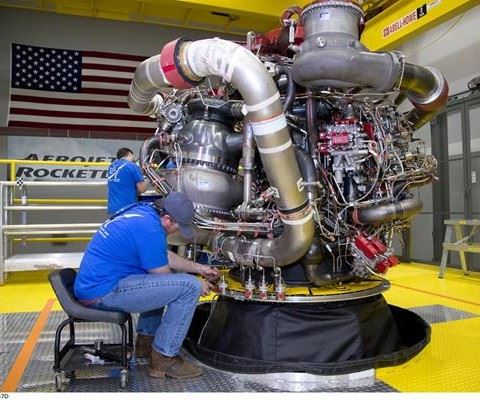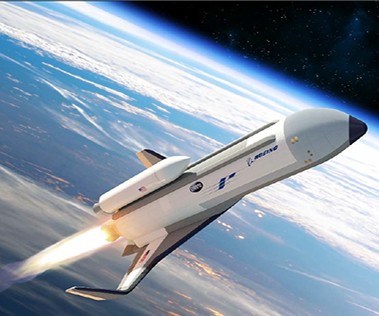Aerojet Rocketdyne completes engine for Boeing spaceplane
Aerojet Rocketdyne’s AR-22 engine is the main propulsion for Boeing’s Phantom Express, which is being developed for DARPA’s Experimental Spaceplane program.
Aerojet Rocketdyne (Sacramento, CA) announced in early June it has completed assembly of its first AR-22 rocket engine built for Boeing (Chicago, IL, US) as part of the US Defense Advanced Research Projects Agency (DARPA, Arlington County, VA, US) Experimental Spaceplane program.
The Boeing spaceplane, called Phantom Express, will take off vertically and land horizontally. The vehicle will be equipped with an expendable second stage capable of placing up to 3,000 lb (1,361 kg) of payload into low Earth orbit. The spaceplane design includes composite cryogenic propellant tanks and hybrid composite-metallic wings and control surfaces.
Aerojet Rocketdyne’s AR-22 engine, derived from the Space Shuttle Main Engine was designed for reusability and is the main propulsion for Phantom Express. The engine is capable of generating about 375,000 lb (170,097 kg) of thrust and was designed to fly 55 missions with service every 10 missions.
Aerojet Rocketdyne assembled the AR-22 at its facility at NASA’s Stennis Space Center in Hancock County, MS, US. The engine will undergo a series of daily hot-fire tests at Stennis starting this summer to demonstrate its ability to support the high flight rates envisioned for Phantom Express. These tests will also provide valuable insight that will be used to refine Phantom Express flight and turnaround procedures, while also informing the design requirements for the new ground infrastructure that Boeing is developing for the flight program.
Related Content
-
Plant tour: Spirit AeroSystems, Belfast, Northern Ireland, U.K.
Purpose-built facility employs resin transfer infusion (RTI) and assembly technology to manufacture today’s composite A220 wings, and prepares for future new programs and production ramp-ups.
-
Plant tour: Middle River Aerostructure Systems, Baltimore, Md., U.S.
The historic Martin Aircraft factory is advancing digitized automation for more sustainable production of composite aerostructures.
-
PEEK vs. PEKK vs. PAEK and continuous compression molding
Suppliers of thermoplastics and carbon fiber chime in regarding PEEK vs. PEKK, and now PAEK, as well as in-situ consolidation — the supply chain for thermoplastic tape composites continues to evolve.


















